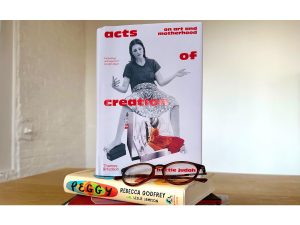The Echoes of History
Marcos Carrasquer‘s art is a profound exploration of the personal interwoven with the historical. Growing up in the aftermath of his family’s traumatic experiences during the Spanish Civil War, Carrasquer has been deeply influenced by stories of exile and survival. The forced departure of his relatives from Spain, including a father and uncle who faced imprisonment and another uncle who perished in battle, left indelible marks on his psyche and, consequently, his creative expression. This profound connection to the past is palpable throughout his body of work, where he often delves into themes of conflict and human endurance.
Carrasquer’s upbringing in Hilversum and his academic tenure at the Willem de Kooning Academie broadened his perspective, providing him with a rich tapestry of cultural insights that he skillfully incorporates into his art. This unique blend of personal history and diverse cultural exposure has cultivated a fertile ground for Carrasquer to explore and express complex narratives through his art, making every piece not only a visual spectacle but also a narrative rich with historical and personal significance.
Marcos Carrasquer: The Art of Layered Complexity
In the realm of visual arts, Marcos Carrasquer stands out for his commitment to creating intricate, thought-provoking pieces. He articulates a clear intent to engage viewers on multiple levels, urging them to uncover layered meanings with each viewing. This approach reflects his belief in the complexity of life—replete with its entangled layers of history, emotion, and experience—which he feels cannot be distilled without diminishing its essence. The deliberate inclusion of unexpected elements in his works serves as an intellectual challenge to his audience, encouraging a deeper reflection on the content and context of the canvases before them.
Transitioning from abstract beginnings to what he now terms ‘documentary painting’, Carrasquer’s artistic evolution has been influenced by his experiences in cities like Barcelona, New York, and Paris. These cultural capitals have not only shaped his style but have also honed his focus on societal issues, allowing him to express contemporary narratives through a blend of surrealism and realism. His recent works, particularly those showcased at the Polaris Galerie under the evocative title ‘Y lo que me falta me lo imagino’ (And what’s lacking, I’ll imagine it), exemplify this mature style that bridges historical with contemporary, urging a reexamination of past and present conflicts.
The Dance of Tragedy and Humor
Marcos Carrasquer skillfully balances the tragic with the grotesque and the humorous in his artworks, crafting a delicate equilibrium that reflects the absurdities of life. He believes that humor is essential in art, especially when addressing heavy or complex subjects. This blend allows viewers to approach difficult themes more comfortably, providing a buffer that tempers the harshness of reality with a touch of levity. According to Carrasquer, humor acts as a gateway that invites deeper engagement and reflection, enabling people to contemplate serious topics without becoming overwhelmed. This methodical balance not only enhances the accessibility of his work but also deepens the viewer’s connection to the underlying messages.
The artist’s unique approach to blending dark themes with comedic elements creates a space where viewers can find relatability and reflection. This juxtaposition serves as a powerful tool in Carrasquer’s artistic arsenal, making his work not only memorable but also profoundly impactful. It is through this interplay that Carrasquer invites his audience to explore the full spectrum of human emotion, highlighting the complexity and often contradictory nature of life itself.
Marcos Carrasquer: A Mirror to Society
Throughout his career, Marcos Carrasquer has continuously explored the role of the artist in society, particularly through the lens of his own experiences in multiple countries. Early on in France, he felt the sting of being perceived as an outsider, which shaped his understanding of the artist’s societal role. Carrasquer sees artists as essential societal commentators—thinkers and provocateurs who do much more than beautify spaces. They challenge the status quo, prompting society to confront its imperfections and beauties through creative expression. This role, he argues, is often misunderstood and undervalued, yet it is crucial for fostering societal reflection and change.
Looking ahead, Carrasquer is committed to deepening his exploration of themes such as displacement and identity, which are increasingly relevant in our globalized world. His upcoming projects aim to weave historical imagery with contemporary issues, continuing to push the boundaries of documentary painting. Audiences can anticipate new exhibitions at Polaris Galerie that will delve into these complex narratives, offering new perspectives on the interconnectedness of past and present challenges. Through his art, Carrasquer not only captures the essence of current societal issues but also propels the dialogue forward, encouraging viewers to reevaluate their perceptions and understandings of the world around them.




